Explore our wide variety of lesson plans that address topics such as Jewish women’s involvement in the Civil Rights and Labor movements, the developing role of women in Jewish ritual life, Jewish women’s contributions in fields from art to politics, and so much more! Our lesson plans are highly adaptable; we encourage all users to pick and choose the content that they want to use, and to integrate our lessons into their own curricula.
Browse Our Curricula
Filter Our Lesson Plans
Jewish Radicalism and the Red Scare
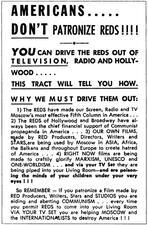
Examine the rich tradition of Jewish radical politics and its repression in the McCarthy era, focusing on the history of Jewish radicalism in the entertainment industry and the Hollywood blacklists of the 1940s and 1950s.
Eve the Mother

Learn about Eve’s role as the first mother, and consider what her story might teach us about going through a difficult experience without sufficient support.
Queen Esther and Bella Abzug: Costumes, Leadership, and Identity
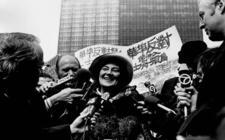
Discover how two remarkable Jewish women: The biblical figure, Esther, and the historical figure, Bella Abzug, both fought for justice and liberation by adopting personas that helped them achieve their goals.
Jews and the Civil Rights Movement: the Whys and Why Nots
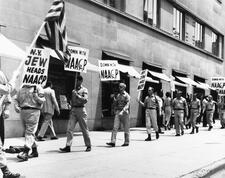
Assume the roles of Southern Jews participating in a Temple board meeting on whether or not to support Northern Jewish activists staging a protest in town.
Hurricane Katrina: Community Responsibility and Tikkun Olam

Explore Hurricane Katrina as an example of how Jews respond to catastrophe. Gail Chalew, a Jewish reporter from New Orleans, tells the story of Haley Fields, a thirteen year old girl from Los Angeles, who came up with her own unique way of helping those in need.
Growing tensions II: Affirmative Action
Assess Jewish attitudes towards Affirmative Action as an example of how individuals and communities try to manage competing priorities.
Civil Rights and Social Justice Today
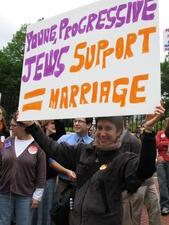
Consider what contemporary civil rights and social justice issues matter to us today, and how Jews and African Americans determine their priorities and responsibilities to effect social change.
Julie Rezmovic-Tonti, with Jessica Kirzane

Julie Rezmovic-Tonti teaches middle school Jewish history and serves as Outreach Coordinator at Gesher Jewish Day School in Fairfax, Virginia. She has a BA in Women's Studies from the University of Maryland and an MA in Jewish Studies from Siegal College. She also studied at Yeshivat Simchat Shlomo and the Shalom Hartman Institute in Jerusalem. She lives in Fairfax, Virginia, with her husband, three children, typewriter, pottery wheel, and garden.
Tamar at the Crossroads
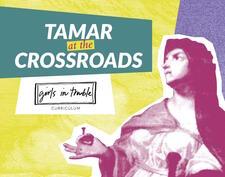
Learn about this fascinating story from Genesis, which is not often discussed. Explore how Tamar takes action to provide herself with what she needs, once she realizes that no one else is going to give it to her.
Power, Privilege, and Responsibility
Analyze how power and privilege shape our relationships and involvement in social justice and activism, using sources including clips from the film Driving Miss Daisy.
Rachael Cerrotti
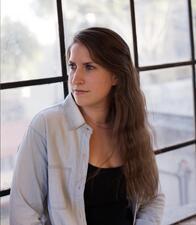
Rachael Cerrotti is a documentary photographer, writer and educator. Her storytelling focuses on narratives of resilience with a unique interest in family history. For nearly a decade, Rachael has been pursuing her long-term project, Follow My Footprints, retracing her grandmother's route of displacement during and in the wake of World War II. She is now writing a book about this journey and regularly speaks in communities and classrooms across the country and abroad.
Sarah's Sacrifice

One of the most famous stories in Genesis is the Binding of Isaac by his father Abraham (the Akeidah, in Hebrew). Sarah, Isaac’s mother, is noticeably absent from the text. Here we consider Sarah’s perspective, and how this foundational event in the Jewish origin story might have affected her.
Jewish Diversity and Innovation: The View from the Kitchen
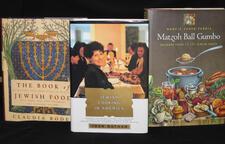
Discover how recipes can tell stories about Jewish history and its ever-changing rich cultural diversity.
Benevolent Societies and Tzedakah
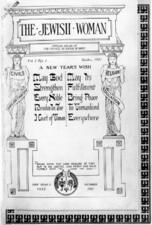
Examine different ways that American Jewish women historically—and we today—fulfill the obligation of tzedakah (charity) and gemilut chesed (acts of loving kindness).
From Suffering to Action, From the Individual to the Collective

Examine inter-generational relationships among Jewish immigrants, and the role of work and workers’ youth culture in the Americanization process. Use art and writing to explore your own identity formation.
Exploring My Identity
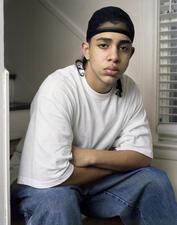
Explore the complexities of our own identities, and how these identities shape the way we view and act in the world.
Moments of Personal Resistance

Examine how individuals take stands against racism and injustice using an essay by Grace Paley and three other short vignettes of individual protest.
Growing tensions I: Black-Jewish Relations
Analyze how underlying rifts in the relationship between African Americans and Jews brought these groups into more overt conflict in the late 1960s, with a focus on the Ocean Hill-Brownsville school crisis and a poetry slam activity.
Henrietta Szold on Saying Kaddish
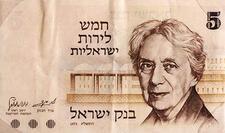
In a 1916 letter, Henrietta Szold (the founder of Hadassah) defied Jewish tradition and challenged rituals that exclude women by asserting her right to say Kaddish (the Jewish prayer for mourners).
Aya Baron
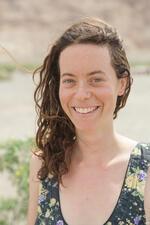
Ramona Brand
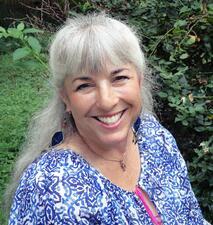
Ramona is Director of Education at Congregation Beth Ahabah in Richmond, VA. Her winning lesson plan, “Our World Through a Jewish Lens,” introduces students in grades 8–10 to photojournalist Ruth Gruber, whose work was influenced by her Jewish identity, and asks how they might express a Jewish point of view through photography.
Our World Through a Jewish Lens
Workers and Their Allies, Then and Now

Through the history of mutual aid societies, unions, and settlement houses, as well as contemporary organizations working for labor rights, consider the ways Jews have supported one another and also worked in solidarity with others to repair the world.


